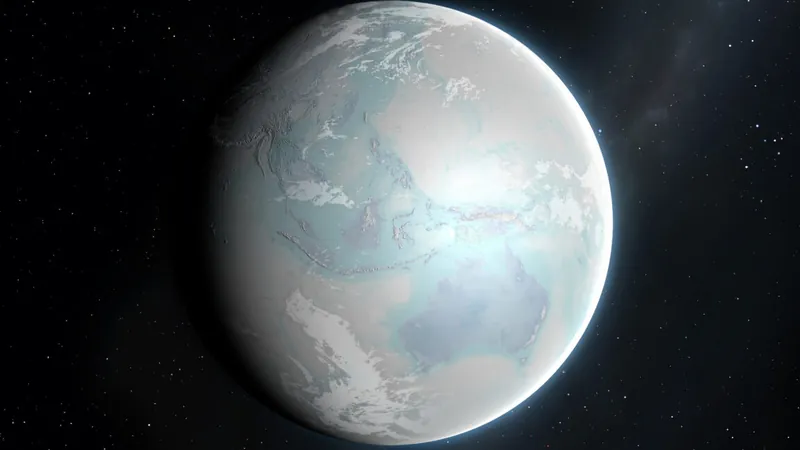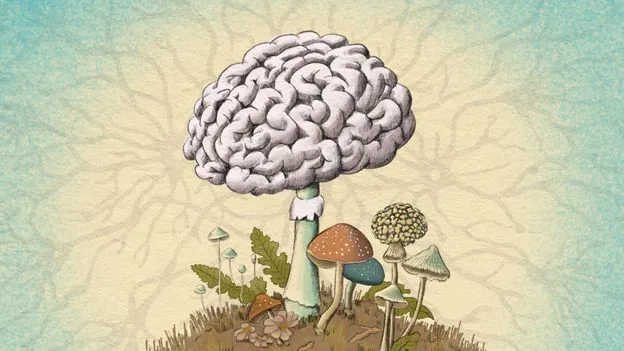
Unlocking the Mystery of Snowball Earth: What Did Our Planet Look Like During Its Icy Epoch?
2024-11-13
Author: Jessica Wong
Unlocking the Mystery of Snowball Earth: What Did Our Planet Look Like During Its Icy Epoch?
It’s widely accepted that Earth underwent severe global glaciations between 600 million and 700 million years ago, right before the explosion of complex animal life during the Cambrian period. Climate models show us that when a significant portion of dark ocean is covered by reflective ice, a chilling feedback loop sets in, transforming the planet into a frozen wasteland known as "Snowball Earth." Geologists have uncovered glacial remnants deposited even in tropical regions, hinting at the vast reach of these icy conditions.
Despite significant progress, we still have a fragmented perspective of what these Snowball Earth epochs looked like. The Antarctic landscape provides some clues, yet evidence from continental interiors remains elusive. Recently, a group of researchers made an exciting discovery in Colorado, where they identified deposits that suggest glacial activity beneath a massive ice sheet heated from below by volcanic activity.
Discovering Glacial Deposits: The Quest for Evidence
Identifying glacial deposits from Earth’s distant past is no easy feat. The immense pressure from large ice sheets often scours the land down to bare rock, leaving behind loosely consolidated debris that is easily eroded or obscured. While offshore deposits confirm coastal glaciers, locating their land-based counterparts is a much more difficult task.
This challenge has made the study of the Snowball Earth periods particularly complex. Although climate models predict vast ice sheets enveloping the continents, direct evidence is scarce. Antarctica presents a mixed scenario: while it is home to colossal ice sheets, it also hosts dry valleys with minimal precipitation, showcasing how different terrains can experience varying climatic conditions during these glacial periods.
A Groundbreaking Find in Colorado
A team of U.S. geologists recently turned their attention to the Tavakaiv sandstones found in Colorado's Front Range. These deposits, believed to have formed under a significant glacial ice sheet, could shed light on what the interior of continents experienced during the harshest phases of glaciation.
Sandstones can form through various geological processes, but the Tavakaiv sandstones show unique characteristics due to dark rock intrusions rich in quartz and hematite, an iron oxide. These intrusions indicate a considerable geological force at play, potentially revealing the history of intense pressure experienced at the base of glacial ice.
Dating Back to the Snowball Era
The hematite content in these sandstones offers an exciting opportunity for dating, as it can trap uranium and its decay products. Samples from the Tavakaiv sandstone ranged in age, suggesting formation during the Sturtian glaciation, which occurred from 715 to 660 million years ago when North America was positioned near the equator.
The research team proposes that these hematite formations resulted from the massive pressure of glacial ice acting on liquid water beneath. They suggest various mechanisms could generate this water—such as local heating from friction, surface melt drainage, or a unique combination of pressure and temperature. However, since hematite typically forms at elevated temperatures, the researchers have indicated that these deposits likely originated from geothermal fluids, possibly linked to volcanic activity in the region.
A Peek into Earth’s Frozen History
While this discovery offers insights into one particular continental area during the Snowball Earth period, it does not necessarily imply that all continents experienced the same conditions. Just as seen in Antarctica, ice sheets might cohabit with dry valleys depending on the specific environmental factors at play.
The Colorado deposits give us a valuable glimpse into a challenging chapter of Earth's history that has remained difficult to explore fully. Understanding Snowball Earth not only enriches our knowledge of climate evolution but also highlights the dynamic interactions between geological and climatic forces over millions of years. As research continues, the search for further evidence could reshape our understanding of how life and landscapes evolved after this frozen epoch.
Stay tuned as more discoveries emerge, possibly revealing the secrets of our planet's icy past!



 Brasil (PT)
Brasil (PT)
 Canada (EN)
Canada (EN)
 Chile (ES)
Chile (ES)
 Česko (CS)
Česko (CS)
 대한민국 (KO)
대한민국 (KO)
 España (ES)
España (ES)
 France (FR)
France (FR)
 Hong Kong (EN)
Hong Kong (EN)
 Italia (IT)
Italia (IT)
 日本 (JA)
日本 (JA)
 Magyarország (HU)
Magyarország (HU)
 Norge (NO)
Norge (NO)
 Polska (PL)
Polska (PL)
 Schweiz (DE)
Schweiz (DE)
 Singapore (EN)
Singapore (EN)
 Sverige (SV)
Sverige (SV)
 Suomi (FI)
Suomi (FI)
 Türkiye (TR)
Türkiye (TR)
 الإمارات العربية المتحدة (AR)
الإمارات العربية المتحدة (AR)